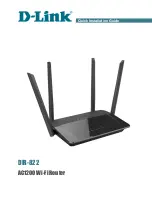
24
S
ONIC
WALL S
ONIC
P
OINT
A
DMINISTRATOR
’
S
G
UIDE
:
To appreciate the LAN Port Disconnect transition, consider what happens with a regular off-the-shelf
access point in the event of a loss of LAN connectivity, for example, as a result of being physically
disconnected or due to a faulty cable--once the Access Point loses its LAN link, it can no longer pass
traffic from the wireless segment to the wired segment, but since its radio remains operational, all the
associated clients remain associated--even if there is another fully connected and operation Access
Point that can service them. The wireless clients are effectively stranded until some manual remedial
action is taken.
If a SonicPoint loses LAN connectivity to its peered SonicWALL security appliance, that SonicPoint
will immediately send disassociation messages to all associated clients, and will not accept
subsequent association requests, forcing the clients to roam to the next available SonicPoint. The
moment the LAN link is restored, the SonicPoint will begin to accept associations, allowing clients to
roam back as their card's roaming logic decides. In conjunction with the AutoChannel feature, which
allows SonicPoints to determine the best channel of operation based upon their environment,
overlapping SonicPoints can easily be deployed to provide uninterrupted coverage.
Managed Mode and Stand-Alone Mode Transitions
Managed Mode requires that the SonicPoint be connected to a Wireless Interface of a SonicWALL
appliance running SonicOS Enhanced 2.5 or greater. When a SonicPoint is in Managed Mode, it
senses if a security appliance is present using the SonicWALL Discovery Protocol (SDP). Immediately
after a boot, if a security appliance is not detected, the SonicPoint will reboot after a short time interval
(~5 seconds) into Stand-Alone Mode. If a security appliance is initially detected (resulting in Managed
Mode) but then becomes unavailable (such as it is powered off, or physically disconnected from the
SonicPoint), the SonicPoint will poll at a longer interval (~6 minutes), and then revert into Stand-Alone
Mode.
If for any reason a SonicPoint unexpectedly reboots while in Managed Mode, it will reboot into
Managed Mode, unless the unexpected reboot occurred while attempting to upload firmware; in this
case it will reboot into SafeMode. This fail-safe measure is achieved by setting the flash boot ROM
pointer to the SafeMode image at the start of every firmware upgrade process, and setting it back to
the Firmware image only after verifying that the image update completed successfully. Once entering
into SafeMode through this course, if the SonicPoint is still connected to the SonicWALL security
appliance, it will automatically attempt to upgrade firmware again.
Failing to sense a security appliance using SDP for a time interval greater than 6 minutes, a
SonicPoint in Managed Mode will reboot into Stand-Alone Mode. In Stand-Alone Mode, the
SonicPoint acts like a normal off-the-shelf access point. The SDP protocol continues to run while in
Stand-Alone Mode, so if a SonicWALL PRO Series security appliance is ever sensed, the SonicPoint
will automatically reboot into Managed Mode.
•
The SonicPoint maintains separate Managed Mode and Stand-Alone Mode configurations so that
neither conflicts with nor overwrites the other.
•
When SafeMode is engaged (in all versions of SonicOS except for 3.1), either manually or
automatically, both Managed Mode and Stand-Alone Mode configurations are restored to Factory
Defaults. Currently if the SonicPoint device runs SonicOS 3.1, you can enable wired and non-
SonicPoint access points on wireless zones.
•
Restoring factory defaults with the Reset Switch only restores Factory Defaults for that mode of
operation, such as depressing the Reset Switch for 5 seconds while in Managed Mode will only
reset the Managed Mode configuration, but the Stand-Alone configuration will be left intact.
















































